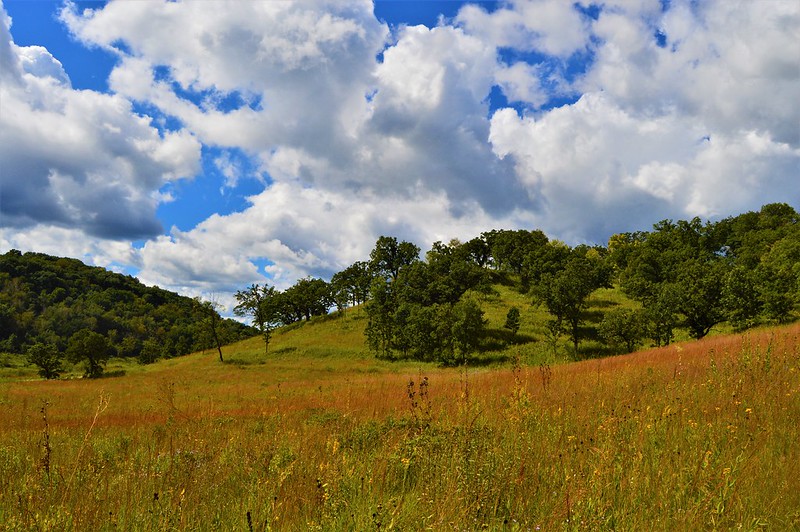pith helmet
Well-known member
In the SE US, fire is often more of a tool than a disaster. Stopped off yesterday in a section of DeSoto Nat Forest while working in SE MS yesterday. This is prime longleaf pine ecosystem: sandy soil, eastern diamondback rattlers, endangered gopher tortoise, and prescribed fire.


This forest is about 500,000 acres and is the most burned of the National Forest system. The reason for this is the necessity of fire in the natural regen of the longleaf pine ecosystem. Actually, most of the smokr jumpers in the US forest service system train here with a man named Eddie Bagget. He sets more fires than anyone in the nation. He also has a big handlebar mustache and wears a cowboy hat to work, which is supercool.
The pic with the Toyota is an unburned section; yaupon, gallberry and small hardwood abound. No natural regen of historic longleaf pine habitat.
The second pic is of an actively managed longleaf pine stand. It has been commercially thinned and regularly burned. The fire is necessary to create light to the forest floor and expose the soil to prepare the seed bed.
Unfortunately, the thick grass in the foreground is an invasive called Cogongrass. It was accidentally introduced from SE Asia in the early 1900’s as a packing material in crates via the port of Mobile ( some say New Orleans but Mobile seems more probable due to the area of spread). It crowds out native species and has little to no wildfire forage usage. The similarly-colored grass in the background is native Broomsedge Bluestem grass, present due to the fire regime.

Again in the foreground here. It is most often spread by logging and dirt moving machines and is only controlled by an aggressive herbicide regime, usually with a soil active herbicide Arsenal, or as a generic, Imazapyr.
There was historically 70,000,000 acres of longleaf pine from SE Texas to VA. Nowadays when properly managed, longleaf pine forests are superb habitat for upland bird species such as wild turkey and bobwhite quail as well as endangered species like red cockaded woodpeckers, gopher tortoise and rare but less endangered species like hog nose snakes.

This is a clients timber stand and the reason I was in that area. This is mature longleaf, probably 100 + years old. The trees are deceptively small in the pic. They are 30” diameter or so. This are was severely impacted by hurricane Katrina in 2005 and has never seen a fire regime. For the latter reason, the understory is full of invasive vegetation with no natural regen of longleaf.
This stand will be harvested, sheared and piled, burned and replanted with longleaf seedlings. A fire regime will be introduced in the year following planting.


This forest is about 500,000 acres and is the most burned of the National Forest system. The reason for this is the necessity of fire in the natural regen of the longleaf pine ecosystem. Actually, most of the smokr jumpers in the US forest service system train here with a man named Eddie Bagget. He sets more fires than anyone in the nation. He also has a big handlebar mustache and wears a cowboy hat to work, which is supercool.
The pic with the Toyota is an unburned section; yaupon, gallberry and small hardwood abound. No natural regen of historic longleaf pine habitat.
The second pic is of an actively managed longleaf pine stand. It has been commercially thinned and regularly burned. The fire is necessary to create light to the forest floor and expose the soil to prepare the seed bed.
Unfortunately, the thick grass in the foreground is an invasive called Cogongrass. It was accidentally introduced from SE Asia in the early 1900’s as a packing material in crates via the port of Mobile ( some say New Orleans but Mobile seems more probable due to the area of spread). It crowds out native species and has little to no wildfire forage usage. The similarly-colored grass in the background is native Broomsedge Bluestem grass, present due to the fire regime.

Again in the foreground here. It is most often spread by logging and dirt moving machines and is only controlled by an aggressive herbicide regime, usually with a soil active herbicide Arsenal, or as a generic, Imazapyr.
There was historically 70,000,000 acres of longleaf pine from SE Texas to VA. Nowadays when properly managed, longleaf pine forests are superb habitat for upland bird species such as wild turkey and bobwhite quail as well as endangered species like red cockaded woodpeckers, gopher tortoise and rare but less endangered species like hog nose snakes.

This is a clients timber stand and the reason I was in that area. This is mature longleaf, probably 100 + years old. The trees are deceptively small in the pic. They are 30” diameter or so. This are was severely impacted by hurricane Katrina in 2005 and has never seen a fire regime. For the latter reason, the understory is full of invasive vegetation with no natural regen of longleaf.
This stand will be harvested, sheared and piled, burned and replanted with longleaf seedlings. A fire regime will be introduced in the year following planting.
Last edited:







